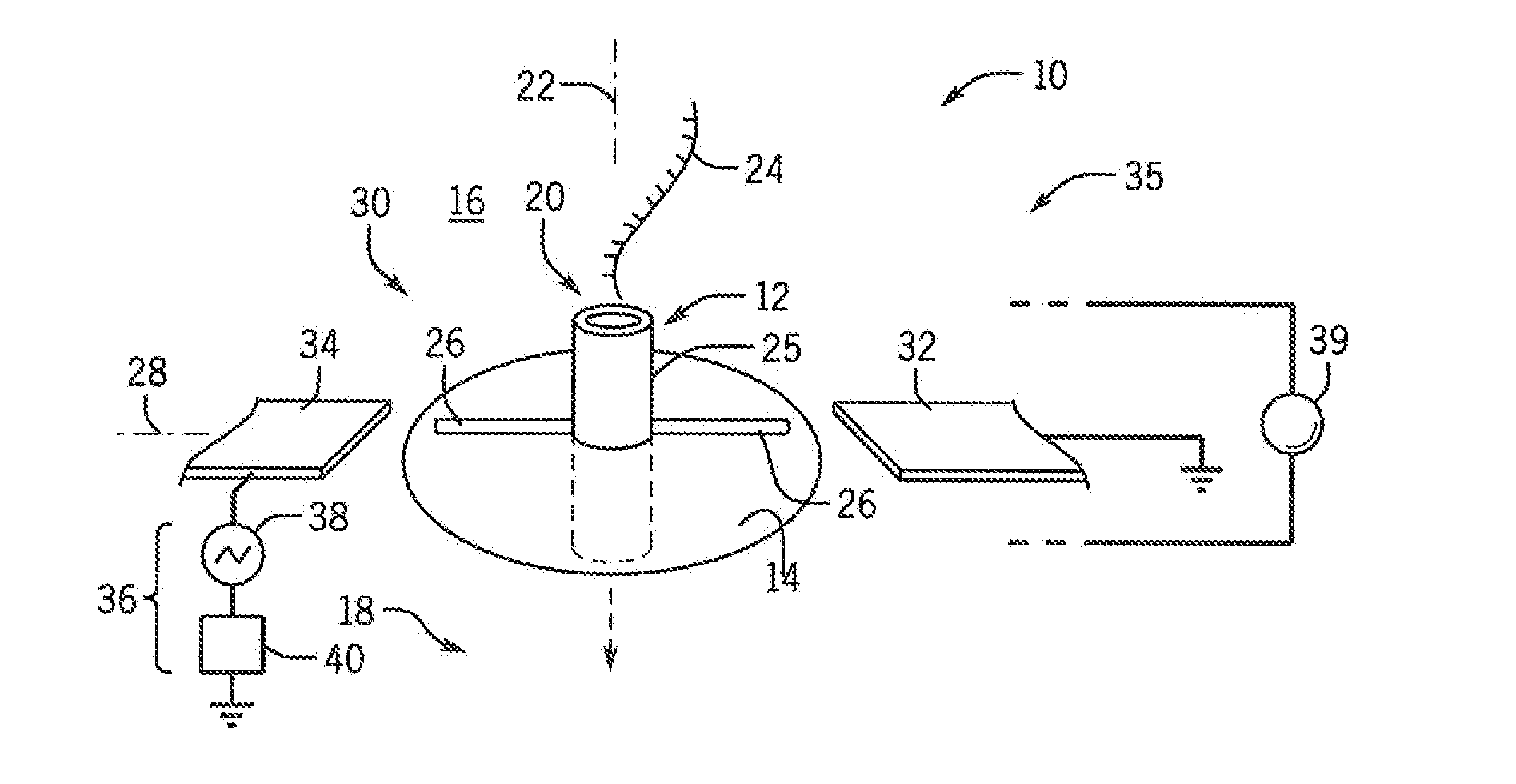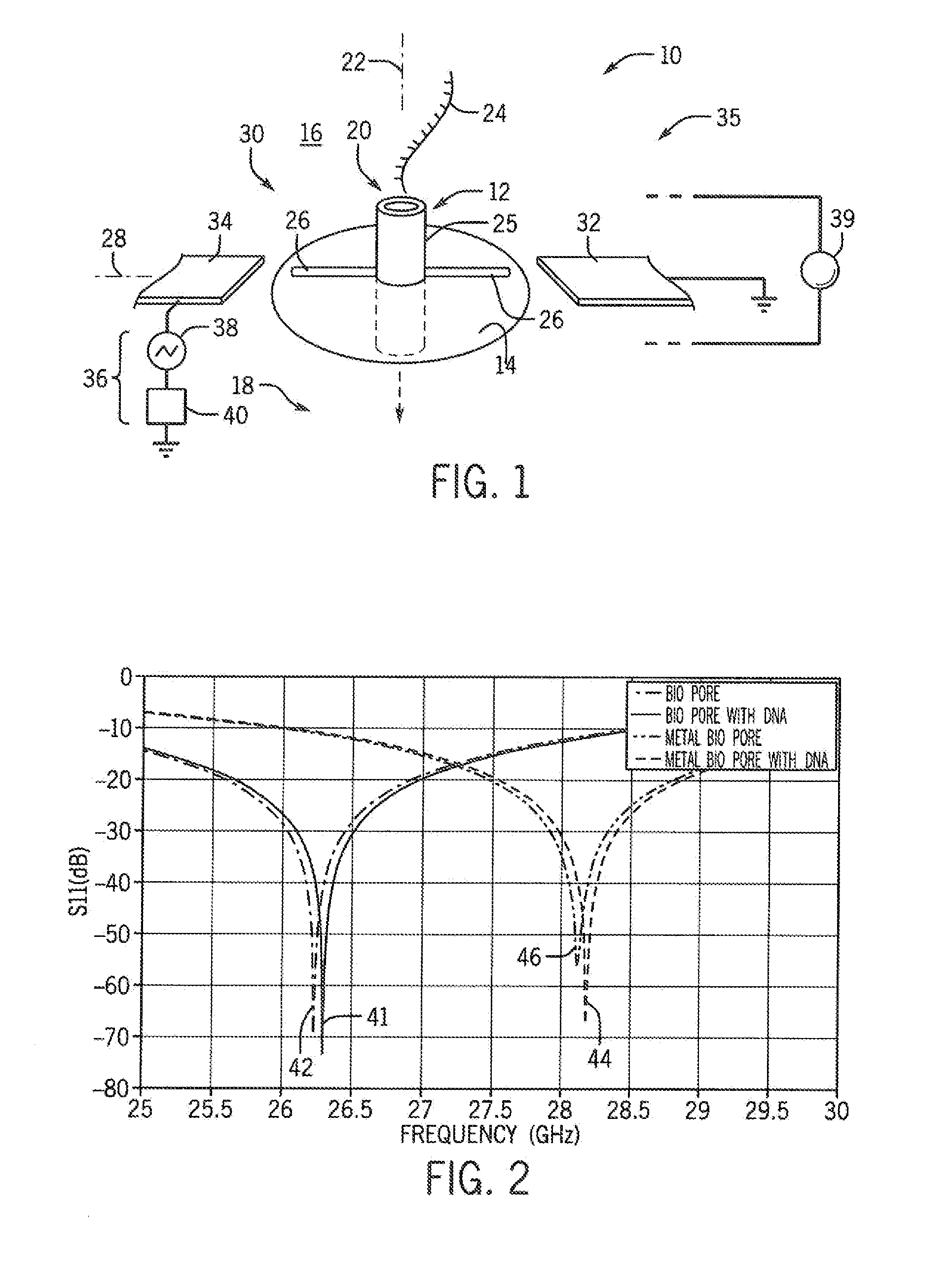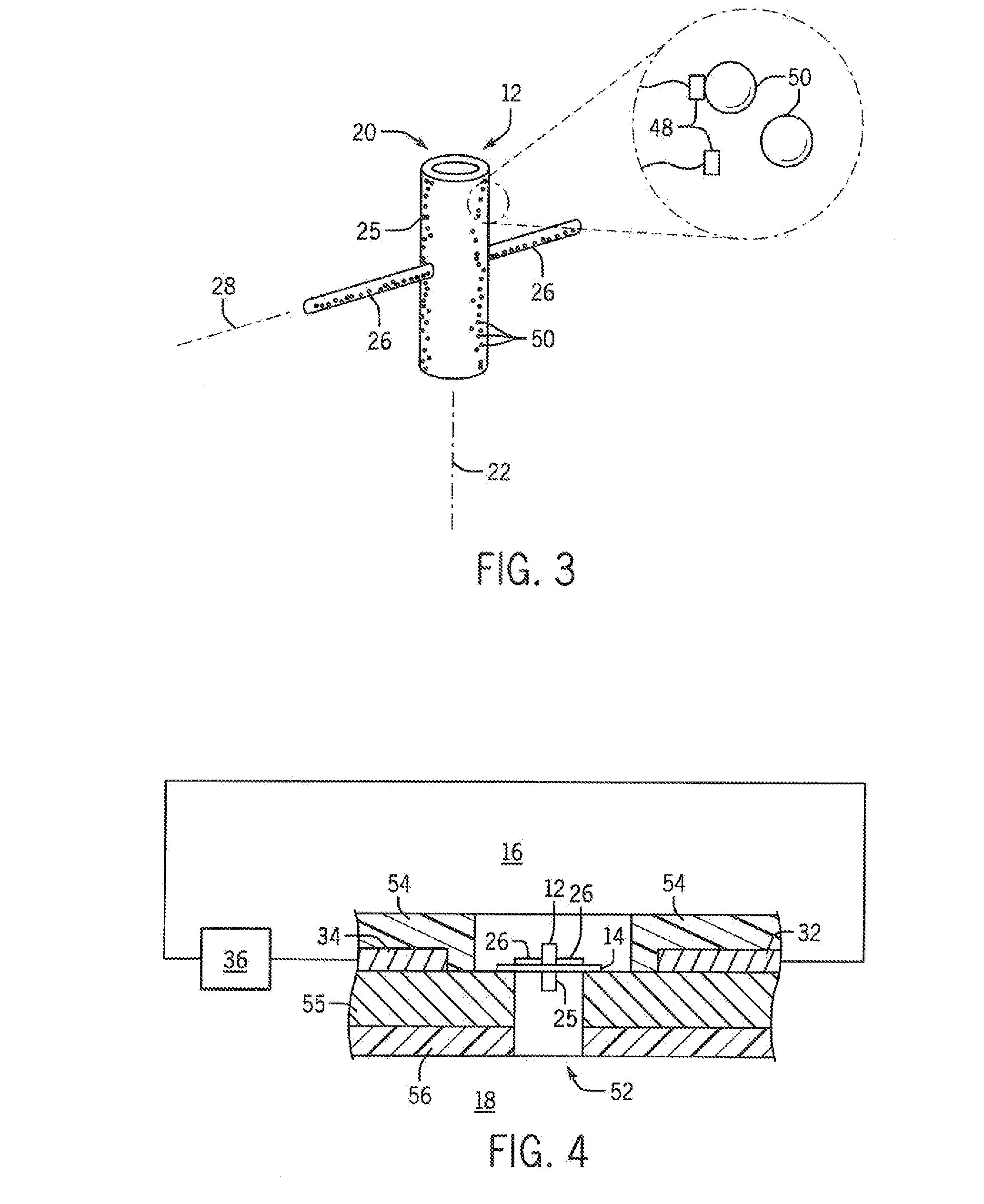Radio-Frequency Nanopore Sensor
a radio-frequency nanopore and sensor technology, applied in the field of radio-frequency nanopore sensors, can solve the problems of difficult to obtain reliable measurements having sufficient resolution, small amplitude of electrical signals produced by changes in ion current through nanopores with different nucleotides, etc., and achieve the effect of convenient integration
- Summary
- Abstract
- Description
- Claims
- Application Information
AI Technical Summary
Benefits of technology
Problems solved by technology
Method used
Image
Examples
Embodiment Construction
[0035]Referring now to FIG. 1, a nanochannel sensor 10 may provide for an electrically conductive nanopore 12 supported on a membrane 14, the latter separating a first chamber 16 on the first side of the membrane 14 from a second chamber 18 on a second side of the membrane. The chambers may hold, for example, a fluid such as a saline solution in which biomolecules to be analyzed may be suspended.
[0036]As supported, the nanopore 12 extends generally perpendicularly through the membrane 14 to provide a through-channel 20 through the membrane 14 along a transfer axis 22 generally perpendicular to the upper face of the membrane 14 and suitable for passing a single strand of a biomolecule 24 such as DNA, RNA, peptides, proteins or the like. The membrane 14 may, for example, be a lipid bilayer of the type known in the art and similar to that forming a cellular membrane or may be a solid state nanomembrane into which the nanopore-12 can be inserted.].
[0037]In one embodiment, a generally cy...
PUM
| Property | Measurement | Unit |
|---|---|---|
| diameter | aaaaa | aaaaa |
| height | aaaaa | aaaaa |
| outer diameter | aaaaa | aaaaa |
Abstract
Description
Claims
Application Information
 Login to View More
Login to View More - R&D
- Intellectual Property
- Life Sciences
- Materials
- Tech Scout
- Unparalleled Data Quality
- Higher Quality Content
- 60% Fewer Hallucinations
Browse by: Latest US Patents, China's latest patents, Technical Efficacy Thesaurus, Application Domain, Technology Topic, Popular Technical Reports.
© 2025 PatSnap. All rights reserved.Legal|Privacy policy|Modern Slavery Act Transparency Statement|Sitemap|About US| Contact US: help@patsnap.com



